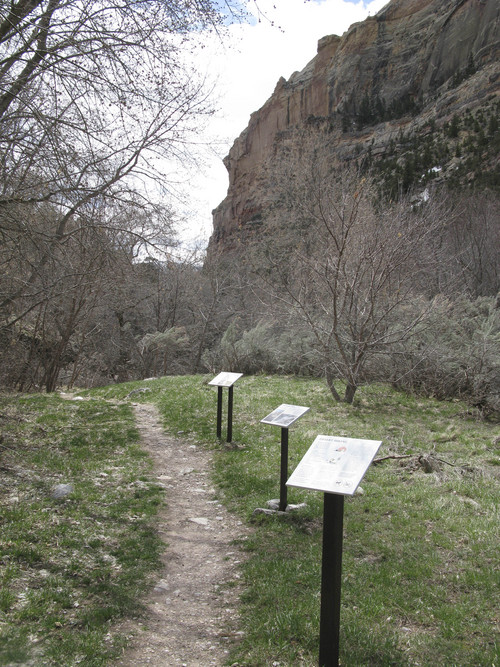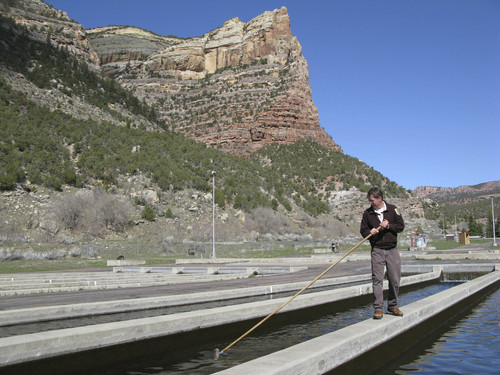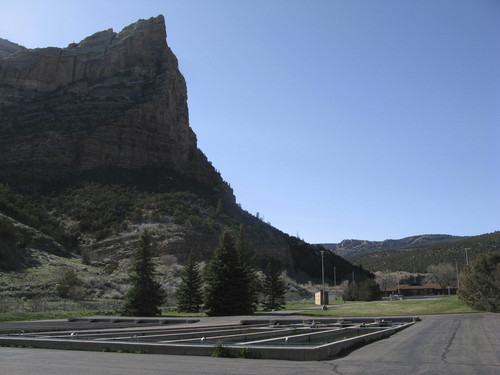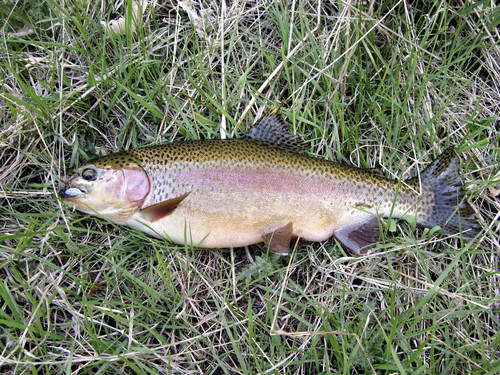This is an archived article that was published on sltrib.com in 2013, and information in the article may be outdated. It is provided only for personal research purposes and may not be reprinted.
While no one from the U.S. Fish and Wildlife Service was wrapping chains around gates Friday, it appears that two federal hatcheries in northeastern Utah could be on the chopping block as the agency develops a National Fish Hatchery System that is "on a more sustainable financial footing."
The Strategic Hatchery and Workforce Planning Report, released Friday, said ongoing budget reductions due to sequestration and increasing costs for operations spurred the review of the 70 national hatcheries.
If sequestration continues into the 2014 fiscal year, service officials say, the agency will have lost close to $6 million for hatcheries since 2012.
"This report sounds the alarm on a hatchery system unable to meet its mission responsibilities in the current budget climate," Fish and Wildlife Service Director Dan Ashe said in a statement.
He said the service will work with partners to decide which steps are financially necessary. The report, based on a review that started in 2012, cites possible hatchery closures starting in fiscal year 2015.
Utah wildlife officials were not surprised by the report, but are concerned about the impact of possible closures.
The first indication that Jones Hole National Fish Hatchery near the Green River in Uintah County was targeted for closure came in 2011, when President Barack Obama's proposed 2012 budget considered eliminating $600,000 for it.
That bullet was dodged, but Jones Hole was obviously low on the list of priority hatcheries across the country.
The report released Friday helps explain why. Fish and Wildlife Service officials identified these priorities in order of importance: recovery of species federally listed as threatened or endangered; restoration of imperiled species; tribal trust responsibilities; other propagation programs for native species; and finally, propagation program for non-native species.
Jones Hole chiefly fills the lowest-priority role as it produces nearly 2 million trout and salmon annually, according to the service. The report shows that 100 percent of production at Jones Hole is of non-native fish.
Flaming Gorge Reservoir, not far from Jones Hole, gets the bulk of the fish — up to 450,000 rainbow trout and 350,000 kokanee salmon annually.
While the fish are not native to Utah, they are extremely popular with anglers at the massive reservoir on the Utah/Wyoming state line.
"It would be really difficult for both [state] agencies to come up with those fish in their systems," said Ryan Mosley, Flaming Gorge project leader for the Utah Division of Wildlife Resources (DWR). "Losing those rainbows and kokanee would not only impact anglers at Flaming Gorge, but the surrounding economies and anglers across both states as well."
To further complicate the issue, Jones Hole was constructed in 1968 as mitigation for the dam at Flaming Gorge Reservoir. In 2011, Utah sent a letter reminding the national agency about that legal responsibility.
The decades-old agreement leaves unclear what mitigation would mean. Ninety percent of the fish produced by Jones Hole is for mitigation and 10 percent are for tribal obligations, the report said.
Utah officials like the federal hatchery producing sport fish for a reservoir created by a dam built by the Bureau of Reclamation. Utah has come to expect that production for Flaming Gorge; it produces native Colorado cutthroat and Bonneville cutthroat in other facilities for stocking in areas that will help keep the species off the Endangered Species List.
Non-native fish production is done in other national hatcheries, but the costs are often reimbursed by other agencies, such as the Tennessee Valley Authority. For Jones Hole, reimbursement would come from the Bureau of Reclamation — but it says the hatchery is producing fish for enhancement, not mitigation, so it doesn't provide funding. Utah's options include stocking Flaming Gorge with fish produced at state hatcheries, reducing the fish provided to other Utah waters, or taking over management of Jones Hole.
"We are pretty upset about how this is being handled. We feel they are violating their obligation to states to provide mitigation fish," said Greg Sheehan, DWR director. "Maybe they want to hand that hatchery over to Utah. We would be willing to have serious dialogue about that."
Utah's other federal facility, the Ouray National Fish Hatchery near Vernal, was created in 1996 to boost recovery of non-sport native species of the Colorado River drainage, such as the razorback sucker, Colorado pikeminnow, bonytail chub and humpback chub. Because it is focused on native species, Ouray is not as likely to face federal closure.
Twitter: @BrettPrettyman











